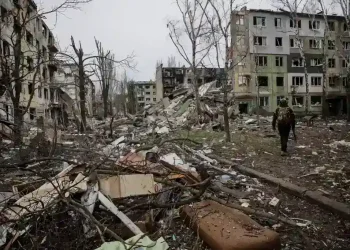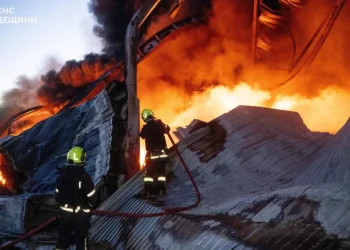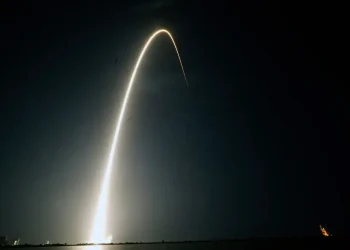Finnish Authorities Detain Ship Linked to Russia Over Baltic Sea Power Cable Damage
Finnish authorities have detained a ship connected to Russia amid an investigation into potential damage caused to a power cable and several data cables in the Baltic Sea. The incident is the latest in a series of disruptions to critical infrastructure in the region.
The Detention of the Eagle S
On Thursday, Finnish police and border guards boarded the vessel Eagle S in Finnish territorial waters. The authorities took control of the ship’s command bridge as part of their investigation, according to Helsinki Police Chief Jari Liukku.
Although flagged in the Cook Islands, the Eagle S is believed to be part of Russia’s shadow fleet of fuel tankers. These vessels, often aging and operating with unclear ownership, were acquired to bypass Western sanctions imposed on Russia due to the ongoing war in Ukraine. These ships, which lack Western-regulated insurance, raise significant environmental concerns.
Suspected Damage to the Estlink-2 Power Cable
The Eagle S’s anchor is suspected of causing damage to the Estlink-2 power cable, which connects Finland and Estonia. Finnish media reports indicate that the cable went down on Wednesday, affecting power transmission between the two countries. This incident is part of a broader pattern of attacks on vital infrastructure in the Baltic region, including the Nord Stream gas pipelines and several data cables.
International Reactions and Concerns
The European Union’s foreign policy chief, Kaja Kallas, expressed concern over the rising number of suspected attacks on critical infrastructure. Kallas, a former Estonian prime minister, commended Finnish authorities for their quick response to the incident. She called the Eagle S part of Russia’s shadow fleet, which not only threatens security and the environment but also helps fund Russia’s war efforts. The EU is considering further sanctions targeting this fleet.
Estonian officials also responded swiftly, holding an emergency session following the cable damage. Prime Minister Kristen Michal stressed the need to enhance the protection of critical infrastructure both on land and at sea.
Growing Threat to Regional Security
This recent damage to the Estlink-2 cable follows a series of attacks on Baltic infrastructure, which has raised alarms about the systemic threat posed by these incidents. In November, two data cables—one between Finland and Germany and another between Lithuania and Sweden—were severed. Germany’s defense minister has suggested that these attacks may be part of Russia’s hybrid warfare strategy, though no specific party has been identified.
Estonia’s President Alar Karis echoed these concerns, stating on social media that the repeated damage signals a growing threat to the region. He called for coordinated action with Finland and NATO allies to address these risks.
The Nord Stream Sabotage and Ongoing Investigations
The attacks on Baltic infrastructure are not limited to power and data cables. In September 2022, the Nord Stream pipelines—vital for transporting natural gas from Russia to Germany—were damaged by underwater explosions. Investigations into this sabotage are ongoing, but authorities have confirmed that it was an intentional act.
Impact and Response
Estonia’s energy network operator, Elering, reassured the public that there is enough spare capacity to meet power demands, despite the damage to the Estlink-2 cable. However, repairs to the cable may take up to seven months, highlighting the significant disruption caused by these ongoing attacks.
As tensions rise over these incidents, it is clear that the security of critical infrastructure in the Baltic Sea remains a key concern for both regional governments and international allies.
This article was rewritten by JournosNews.com based on verified reporting from trusted sources. The content has been independently reviewed, fact-checked, and edited for accuracy, neutrality, tone, and global readability in accordance with Google News and AdSense standards.
All opinions, quotes, or statements from contributors, experts, or sourced organizations do not necessarily reflect the views of JournosNews.com. JournosNews.com maintains full editorial independence from any external funders, sponsors, or organizations.
Stay informed with JournosNews.com — your trusted source for verified global reporting and in-depth analysis. Follow us on Google News, BlueSky, and X for real-time updates.














